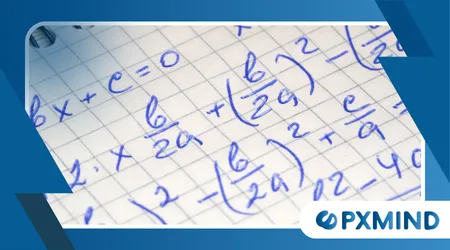vHow to Use the Feynman Technique to Master Anything

Use the Feynman Technique to Master Anything. Imagine unlocking the secrets to deep, rapid learning, transforming complex subjects into simple, digestible knowledge.
Anúncios
This powerful methodology, named after the Nobel laureate physicist Richard Feynman, is more than just a study trick; it’s a profound shift in how one approaches understanding.
The Feynman Technique is a mental model for accelerated comprehension. It helps individuals move beyond surface-level familiarity to true expertise in any field.
What is the Feynman Technique and Why is it Essential for Deep Learning?
At its core, the Feynman Technique is a four-step process. It helps you dissect complicated information and solidify your understanding by teaching it simply.
Feynman himself was famous for his ability to explain intricate physics concepts with clear, beautiful simplicity. This method mirrors that genius.
It is a feedback loop designed to expose gaps in your current knowledge instantly. It makes learning active, not passive.
How Does the Feynman Technique Work in Practice?
The technique breaks down into four sequential and essential steps. Each step builds upon the last, driving the learner toward mastery. It demands active recall and synthesis of information. This structured approach ensures no corner of the subject remains foggy or unclear. It’s an iterative process, constantly refining your mental model.
Step 1: Isolate and Study the Subject Matter
Select the specific concept you wish to learn thoroughly. Immerse yourself in the material, taking notes as you normally would.
Ensure you have a baseline understanding of the topic. This initial survey is the foundation for all subsequent steps. Use your resources to gain initial clarity.
Step 2: Explain it Simply to a Child Use the Feynman Technique to Master Anything
Take a blank sheet of paper and write the concept’s title at the top. Now, explain the concept in your own words as if you were teaching it to a bright 12-year-old.
Read more: The Role of Curiosity in Accelerated Learning
Crucially, use only plain language and avoid jargon. The power of this step lies in its forced simplicity. This is where superficial knowledge crumbles.
Step 3: Identify Knowledge Gaps and Return to the Source
Inevitably, your explanation will falter, or you’ll resort to technical terms. These are your ‘knowledge gaps’—the areas you don’t truly grasp.
Circle these areas and return to your source material immediately. Study these specific weak points until you can explain them clearly. This targeted review is highly efficient.

Step 4: Refine and Simplify Your Explanation (The Analogies Step)
Finally, review your notes and refine your explanation for clarity and flow. If it’s still complex, simplify it further.
See how interesting: The Best Brain Foods for Better Learningtr
A final, acid test of understanding is the ability to create simple analogies. Can you link the new concept to a familiar idea?
Why is Teaching the Best Way to Master Concepts? Use the Feynman Technique to Master Anything
Teaching forces active retrieval and organization of knowledge. When you prepare to explain something, you must mentally structure the information.
This process deepens encoding in memory far more effectively than merely reading or listening. It’s the difference between memorizing a map and actually navigating the terrain.
Reading a book about building a clock is one thing. Actually teaching someone how to assemble the gears, explaining why each piece is necessary, is another.
Only the latter reveals true, working knowledge. Do we ever truly know a subject until we can simplify it for someone else?
| Learning Method | Retention Rate (Illustrative) | Key Cognitive Process |
| Lecture/Reading | 5-10\% | Passive Reception |
| Practice by Doing | 75% | Active Application |
| Teaching Others | 90% | Active Synthesis & Retrieval |
Note: The retention rates are illustrative based on various learning research models (like the Learning Pyramid), emphasizing the power of active learning over passive methods.
What are the Unexpected Benefits of Using This Technique?
Beyond mere retention, the technique cultivates metacognition. It teaches you how to learn effectively. By constantly searching for simplicity, you train your brain to discard the non-essential.
++Time Blocking vs. To-Do Lists: What’s Better?
This clarity of thought is invaluable in any intellectual pursuit. Furthermore, it builds immense confidence in one’s capacity to learn.

How Can We Use the Feynman Technique to Master Anything, Even Abstract Skills?
The technique isn’t limited to STEM fields. It can be adapted for abstract skills like writing or critical thinking.
A student learns about Bayesian inference. They try to explain it without using terms like ‘prior’ or ‘likelihood function.’
They realize they don’t truly understand how the prior is updated by evidence.
They revisit the source, focusing specifically on Bayes’ theorem visualization, solidifying their understanding.
A novelist wants to master ‘show, don’t tell.’ They use the technique to “teach” the concept. They write an explanation, realize they rely on abstract definitions.
They simplify by creating an analogy: “Telling is a weather report; showing is feeling the rain.” This refinement deepens their practical mastery.
According to a 2024 meta-analysis published in Educational Psychology Review, techniques requiring retrieval and explanatory generation, which are core to the Feynman method, consistently yield effect sizes in knowledge retention that are 30% to 50% larger than traditional passive study.
This statistic confirms the method’s superiority.
The path to expertise is not paved with hours of passive reading. It requires deliberate practice and ruthless self-assessment.
The ability to Use the Feynman Technique to Master Anything transforms learning from a frustrating struggle into an achievable, structured process.
Embrace the blank page; it is your ultimate tool for intellectual clarity.
Frequently Asked Questions
Is the Feynman Technique only for complex scientific subjects?
No, the method’s core principle is simplification, making it applicable to any domain, from history and languages to soft skills like negotiation.
How often should I repeat the steps?
The technique is iterative. Repeat the steps until your explanation is perfectly clear, concise, and requires no mental hesitation.
Does it work for skills that are mostly physical, like coding or playing an instrument?
Yes, it works for the conceptual understanding underlying the physical skill.
For coding, explain the logic of an algorithm. For music, explain the theory behind a scale. This intellectual grasp improves the physical execution.
What is the most common mistake when using this method?
The most common error is being satisfied with a complex explanation. If you use jargon or complex sentence structures, you haven’t simplified enough. The goal is always elegant simplicity.
